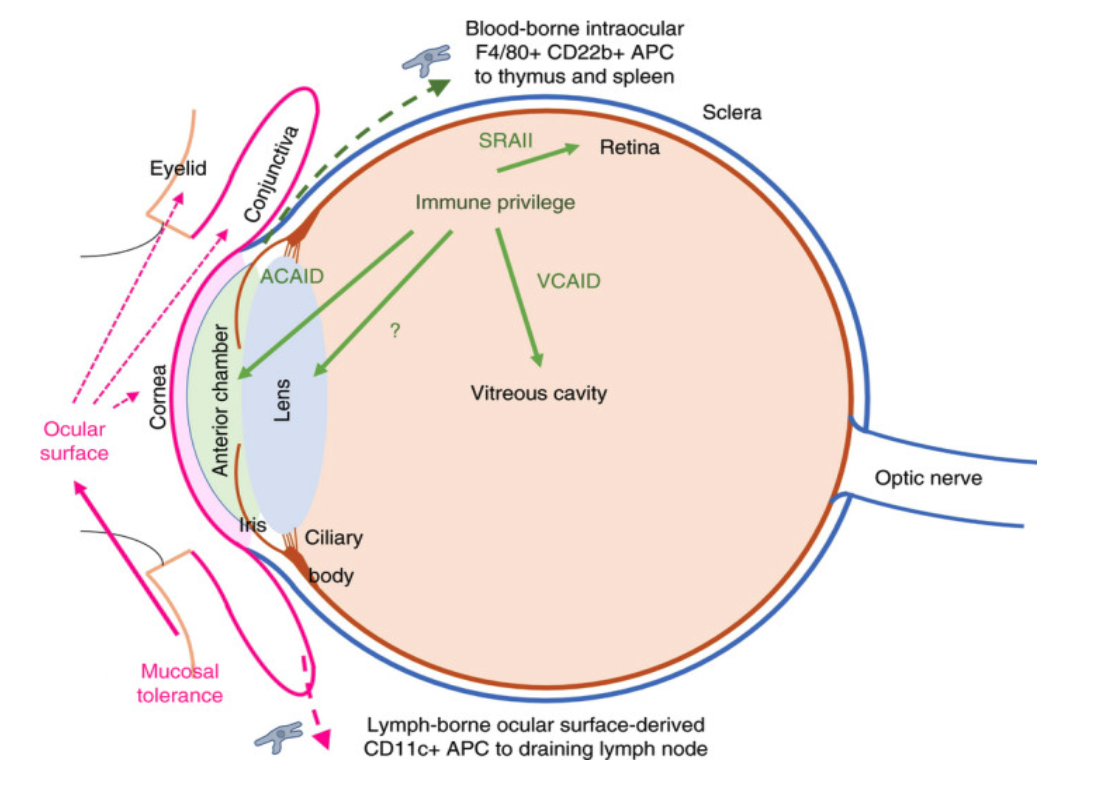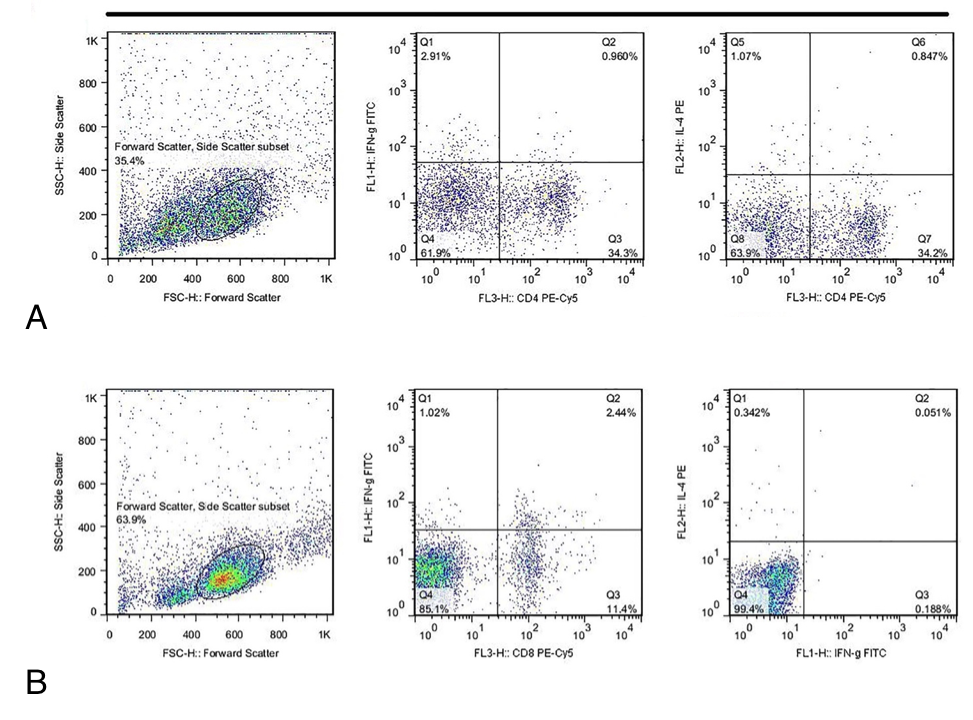
 Send on email
Send on email

Aging naturally leads to a gradual deterioration of the functional capabilities of all systems and, ultimately, to death. This process is closely associated with increased metabolic and oxidative stress, low-grade inflammation, accumulation of DNA mutations, and a rise in related damages. The harmful changes that accumulate in the cells and tissues of the body over time increase vulnerability to environmental challenges and elevate the risk of serious chronic diseases and mortality. The eye’s surface is a part of the visual system that directly interacts with the environment and includes the cornea, the first layer of refractive tissue, and its surrounding structures. The eye’s surface has evolved to keep the cornea smooth and moist, which is essential for proper vision, as well as protected. To achieve this goal, the eye’s surface is a true mucosal niche with an immune system capable of fighting off dangerous pathogens. However, due to the potential harmful consequences of uncontrolled inflammation, the eye’s surface has several mechanisms to regulate the immune response. In particular, the eye’s surface is kept free from inflammation and functional thanks to a special form of peripheral tolerance known as mucosal tolerance, distinctly different from the immune privilege of intraocular structures. Notably, conjunctival tolerance is akin to the mechanisms of tolerance found in the gut and respiratory tract, respectively. With age, the prevalence of immune-related eye surface diseases, which may be linked to age-related deterioration in conjunctival tolerance, increases [1,2].
Eye surface disease is a broad term that encompasses dry eye and other conditions affecting the front part of the eye, such as Sjögren’s syndrome (autoimmune dry eye), meibomian gland dysfunction (affecting the sebaceous glands within the eyelids), post-refractive surgery dry eye, age-related dry eye, and others. Additional eye surface conditions significant in elderly individuals include eye allergies and microbial infections. Dry eye manifests as eye irritation, a sensation of sand, and blurred vision. Eye surface diseases are a common reason for seeking ophthalmological care. Dry eye is one of the most prevalent eye conditions, with a global prevalence of 7 – 21% according to available data. Known risk factors for dry eye disease include aging, contact lens wear, female sex, and autoimmune diseases. The prevalence of dry eye increases with each decade for both women and men, although it is more common in women. Since it affects more women than men, both sex and gender differences have been implicated, although a definitive consensus has not been reached. Both innate and adaptive immunity play a role in the pathogenesis of dry eye, and the vicious cycle of inflammation is well known [3,4].
The eye’s surface is part of the visual system that directly contacts the environment and includes the cornea, the first layer of refractive tissue and the only transparent tissue in the body, along with its surrounding structures. The eye’s surface evolved to keep the cornea smooth and moist, essential for proper vision, and protected. For this purpose, the eye’s surface is a true mucosal niche with an immune system capable of generating a strong response to fight off dangerous pathogens. Considering the potential harmful consequences of uncontrolled inflammation leading to extensive fibrosis and corneal opacity, the eye’s surface has several mechanisms to regulate the immune response and maintain corneal transparency. This regulation is part of what is collectively known as peripheral tolerance, as this is how the immune system differentiates self-antigens from foreign ones and prevents autoimmunity. In particular, the eye’s surface is kept free from inflammation and functional thanks to a special form of peripheral tolerance known as mucosal tolerance, which also operates in the gut and respiratory tract. Immune system aging, or immunosenescence, has been linked to an increased frequency of infections, cancer, and autoimmune diseases in the elderly. A comprehensive review of how aging affects specific components of the eye’s immune system. Interestingly, dysregulation of immune response regulation underlies many eye surface diseases that become more common in older adults, suggesting that mucosal tolerance of the eye’s surface changes with age [3,5].
This article will present a brief overview of the study results on the effects of applying the peptide IPH VIS, which are cytoprotectors and protectors of visual organ functions, thereby offering additional preventative advantages for overall health status. The increase in levels of local and systemic biomarkers, which are released upon peptide application and possess protective qualities, indicates that their application is important in terms of preserving and restoring organ functions at any life stage and under any conditions.
Objective: To explore the possibilities of the peptide complex IPH VIS.
The analysis of the immune response and color perception was carried out using a logarithmic method. The analysis of clinical symptoms was evaluated in percentages using the VAS scale. The analysis of brain functions was conducted using the Montreal scale within the range of 24.8-26.1 points.
We used German peptides IPH VIS, which have all necessary approvals and certifications for global markets, such as: WADA certificate (anti-doping), MAFFA certificate (safety), ORGANIC certificate, HALAL certificate, and patent protection: a patent in the United States – Patent Application Publication (United States, No.:US2021/052534A1, date: Feb.25,2021), a patent in the European Union No. 016704471, a patent in the Russian Federation No. 645608, and a patent in the People’s Republic of China No. 30507522.
When processing the study data, the calculation of average intensive and extensive quantities was performed with the calculation of the standard error; the significance of differences between two populations was assessed using the Student’s t-test (a difference in indicators was considered significant at t>2, p<0.05).
The mucosal lining of the eye is variably exposed to the environment and, therefore, must deal with both harmless and dangerous antigens. The set of regulatory mechanisms through which the mucosal immune system does not react to harmless foreign antigens it contacts is known as mucosal tolerance. Recent evidence has emerged of an immune response in the lens.
The eyeball is limited by the cornea at the front and the sclera at the back. Inside the eye, the lens separates the anterior chamber (filled with green) from the vitreous body cavity (filled with orange). The retina lines the inner surface of the back of the eyeball, and the subretinal space is a virtual space between the neuroretina and the retinal pigment epithelium. All these tissues and structures within the eyeball are considered intraocular and possess immune privilege, a site-specific form of peripheral tolerance with unique features such as blood-borne antigen-presenting cells reaching the thymus and spleen. Specific descriptions in the literature of intraocular immune privileges for some intraocular structures are indicated by the green colors ACAID and VCAID. Conversely, the eye surface (pink) is a collective term for the open part of the eye and includes the cornea, conjunctiva (mucous membrane surrounding the cornea and extending to the inner surface of the eyelids), eyelids, and other tissues and structures not depicted. The eye surface is considered extraocular and, from an immunological perspective, exhibits mucosal tolerance: a mechanism of peripheral tolerance common to each mucosal lining, which is based on antigen presentation in lymph nodes and regulatory T-cells (Figure 1).

Figure 1. Immune response of the mucosal lining of the eye surface.
The immune response of the eye’s mucosal lining can be confirmed by analysis similar to ACAID, although the underlying immune mechanisms differ. Subject to study are immune cells anti-inflammatory IL-4, controlling autoimmune processes SCC-H, interferon-gamma – a factor of acquired immunity against viral, some bacterial, and protozoal infections.
The application of the peptide IPH VIS has a protective immune effect and enhances the production of IL-4 by 45.3%, SCC-H by 39.9%, interferon-gamma by 57.5%, confirming the immunoregulatory protective mechanism of applying the peptide IPH VIS. The data are presented in Figure 2.

A – without the application of peptide IPH VIS
B – with the application of peptide IPH VIS
Figure 2. Model of immune cell expression depending on the application of the peptide IPH VIS.
In elderly people, the prevalence of various eye surface diseases increases, with dry eye being the most common. However, clinical data on eye surface diseases in the elderly do not always fit neatly into clear categories, partly due to overlapping symptoms between conditions. For example, allergic conjunctivitis accounts for a significant portion (18%) of elderly patient visits for allergic diseases, but it is underreported or unrecognized, as eye symptoms are considered part of rhinoconjunctivitis. Moreover, more subtle chronic allergic reactions on the eye surface in elderly patients can be misinterpreted due to the concurrent use of local eye medications (with preservatives) and/or mistakenly attributed to dry eye. Additionally, patients with allergic rhinoconjunctivitis exhibit increased tear osmolarity, which is associated with the pathogenesis of dry eye. The diagnosis of “Sjögren’s syndrome” in elderly patients, a severe form of dry eye, is contentious: some groups suggest that the signs and symptoms are merely related to aging of the immune system, while other clinicians argue that it is indeed an autoimmune condition and should be treated as such. In any case, impaired mucosal tolerance of the eye underlies the relevant animal models for all these manifestations, including aging, highlighting its pathogenic contribution. However, much remains to be learned about the pathogenic mechanisms specific to the aging eye surface and its diseases.
We evaluated clinical symptom indicators after the application of the peptide IPH VIS. The data are presented in Table 1.
Table 1. Evaluation of Clinical Symptoms with the Application of Peptide IPH VIS
| Dry Eye Indicators | Without Peptide IPH VIS Application | With Peptide IPH VIS Application |
|---|---|---|
| Loss of Conjunctival Goblet Cell Density (%) | 67 | 58 |
| Degree of Dry Eye Self-Perception (%) | 79 | 58 |
| Corneal Barrier Disruption (%) | 63 | 46 |
Interestingly, in elderly patients, dry eye disease decreased after the application of peptide IPH VIS with an 11% loss in goblet cell density of the conjunctiva, a 21% reduction in the degree of dry eye self-perception, and a 17% decrease in corneal barrier disruption (distinctive signs of dry eye), confirming the clinical efficacy of peptide IPH VIS application. With age, color perception decreases. After the application of peptide IPH VIS, color perception improved by 38.6%.

A – without the application of peptide IPH VIS
B – with the application of peptide IPH VIS
Figure 3. Color perception depending on the application of the peptide IPH VIS.
Vision quality affects cognitive functions. According to the Montreal scale, the application of peptide IPH VIS improves brain functions by 38.8%, confirming the neuroprotective properties of the peptide IPH VIS and indicating the protective action of the studied peptide in terms of overall health (Figure 4).

*p<0.05 between indicators without peptide application and indicators with peptide IPH VIS application.
Figure 4. Evaluation of brain functions with the application of peptide IPH VIS. Purple color – without peptide application, red color – with the application of peptide IPH VIS.
Thus, the peptide IPH VIS possesses cytoprotective action regarding the functions of the visual organ, which is important for the therapy of age-associated diseases.



Pepts reVision is the ultimate solution for individuals seeking to improve their eyesight and enhance overall eye health.
Pepts reVision is the ultimate solution for individuals seeking to improve their eyesight and enhance overall eye health.
Pepts reVision is the ultimate solution for individuals seeking to improve their eyesight and enhance overall eye health.
Pepts reVision is the ultimate solution for individuals seeking to improve their eyesight and enhance overall eye health.
Pepts reVision is the ultimate solution for individuals seeking to improve their eyesight and enhance overall eye health.
Pepts reVision is the ultimate solution for individuals seeking to improve their eyesight and enhance overall eye health.
